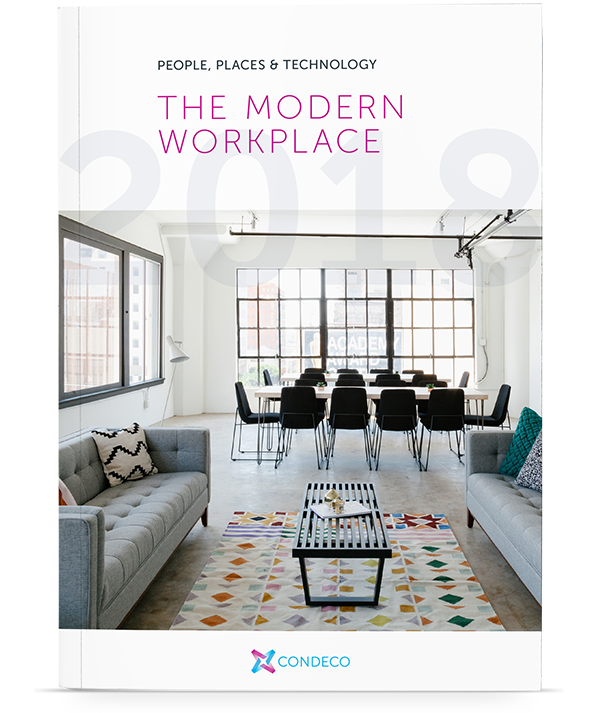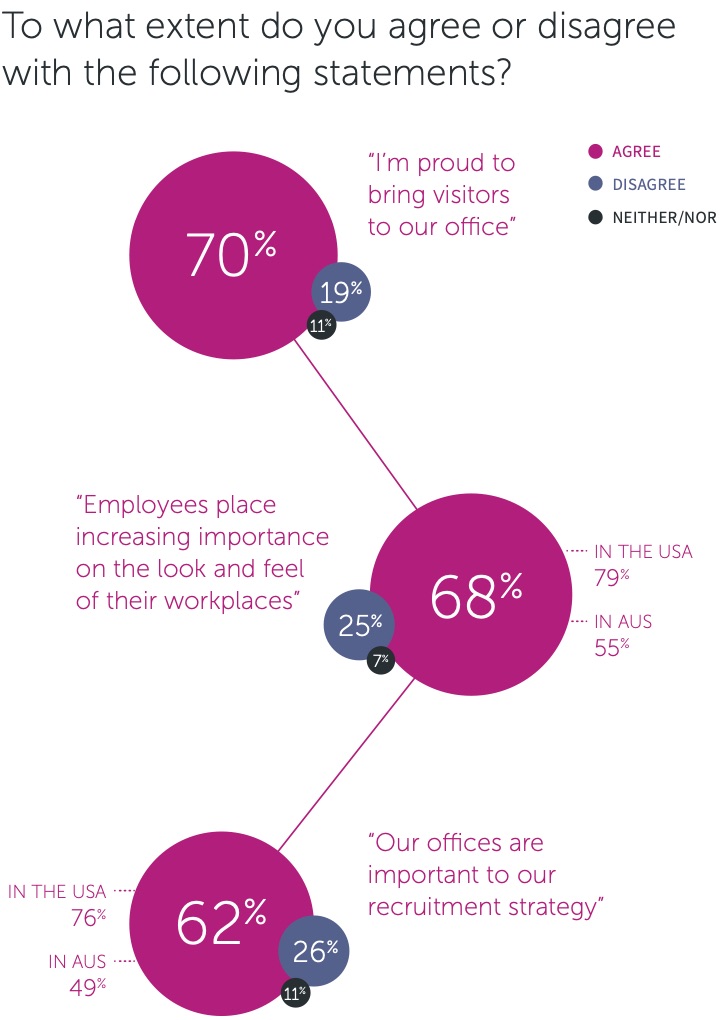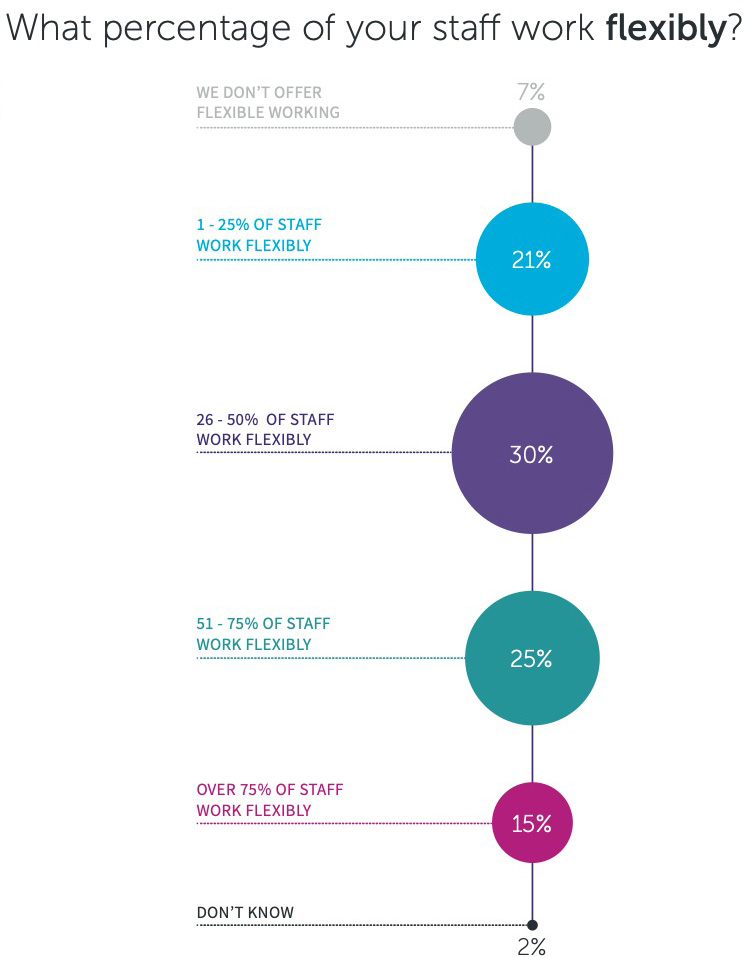
Download the research
Examine the state of the current workspace and identify the trends that are driving change.
Introduction
The 2018 Modern Workplace Research Report explores how working environments now play a major role in staff retention, talent management, employee wellbeing, productivity and more. It examines the state of the current workspace and identifies the trends that are driving change.
The report evaluates four key areas:
- The state of the workplace, encompassing influencing factors, global variations and variety
- The shift in the workplace, exploring global differences, generational divides and the level of environmental consciousness
- Agile and remote working policies, and their take-up and implementation worldwide
- The role of technology in helping workforces collaborate better and improve their productivity
The report is drawn from a survey of 500 workplace leaders, managers and senior executives in six countries: The United Kingdom (UK), the USA, France, Germany, Australia, and Singapore. This was supplemented by eight in-depth interviews with senior executives within those countries. All have strategic responsibility for their company workplaces.
The state of the workplace
The modern workplace is the frontline in the battle for talent management, employee engagement, and productivity, Getting the environment right is crucial to business success, encompasses everything from desks and chairs to decor and coffee facilities. The choice sends a message about how the company views its brand, its staff, and its customers. But the right choice for one company can be the wrong choice for another.
The fact that employees are at work every day makes it a key part of their relationship with the company. Two-thirds of business leaders agree that employees are placing growing importance on where they work (see Table 1). A similar proportion (62 percent) regard their offices as a key component of their recruitment strategy. One UK banking executive said that this had been clearly indicated in employee feedback: “In our most recent engagement survey it was one of the most important things for staff, it was one of the things that give them the impression that we care.”
If the workplace isn’t right then employees often won’t raise the problems, they will simply go elsewhere. This makes it important to get their opinions on the workplace when possible.

The workplace shift
Flexible open spaces are the new normal for most workers.
Companies have typically adapted their offices to boost collaboration and productivity by eliminating physical boundaries, such as partitions, cubicles, and offices, to make cross-functional working easier. This is bringing about a transformation in workplaces – the offices in which people work – and workspaces – the desks and other areas where individuals do their work.
The goal of these new, open environments is improved flexibility and agility. A senior UK banking executive said: “The open plan call-center style office with rows and rows of single desks is history.”
This flexibility means more than just moving people to new desks and grouping colleagues into ‘pods’, it’s also about ensuring that the right technology is available to get the job done.
“We found integrated teams to be more effective so, as an attempt to create a more open and collaborative environment, every team works cross-functionally. We encourage people not to become too rooted in a team, so we mix teams up regularly, often on a quarterly basis.”
UK, Chief Operating Officer
Agile working trends
The days of the 9am-to-5pm, or more routinely structured workday, are history for many people and organizations. Employers, knowing that employees are connected to the office via their smartphones, have become more relaxed about staff working flexibly, whether to accommodate the school drop-off and pick-up or just to avoid a crowded commute. Other employees have caring responsibilities or other priorities that make a rigidly structured workday difficult. Likewise, many employees are now able to work remotely – having the job they want while also living where they choose.
Nearly all business leaders that we surveyed welcome and support flexible working practices and believe that it represents a growing trend. It reflects
a wider shift towards acknowledging a need for a better work-life balance and giving people more control over their working lives.
Working flexibly at least some of the time is the norm for the majority of staff in around a third of businesses (40 per cent), but this figure is higher in the US and Australia.


Download the full 2018 report
The modern workplace is the frontline in the battle for talent management, employee engagement and productivity.


